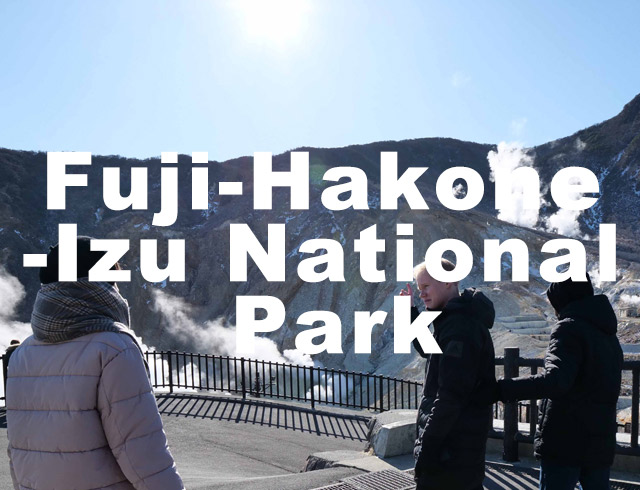

The natural wonders of Fuji-Hakone-Izu National Park’s Hakone area can be enjoyed in a multitude of ways. Particularly exhilarating is the area around the Hakone Visitor Center, from Kojiri to Sengokuhara (including Ōwakudani), where magnificent views of Mt. Fuji can be found, as well as abundant nature and incredible volcanic terrain. With adventure travel, you get face-to-face with the area’s stunning natural beauty.
Discover the wonders of Fuji-Hakone-Izu National Park’s natural environment at the Hakone Visitor Center. Learn about the area and acquire the latest information on the region’s nature through topographical models, photos, high-definition videos, and more.
■Opening Hours:9am-5pm(Last Entry:4.30pm)
■Holidays: Second Wednesday and Thursday of June, New Year’s holiday period
■URL:http://hakonevc.sunnyday.jp/shizenjyouhou/gazou/englishindex.html
In fall, the entirety of the Sengokuhara highlands becomes an undulating field of Japanese pampas grass. The grass grows as far as the eye can see in the area between the road running from Daigatake Bus Stop to Sengoku-Kogen Bus Stop, and the slopes of Mt. Daigatake.
The crater of Mt. Kamiyama, Ōwakudani formed approximately 3,000 years ago during Mt. Hakone’s last eruption. White smoke billows from the desolate expanse of land, where even now, visitors can experience the intense power of volcanic activity.
A valuable facility where visitors can learn of the origins and history of Hakone and Ōwakudani. Displays, including column exhibitions separated by theme, incorporate authentic items such as rocks.
■Opening Hours:9am-4pm
■Holidays: Open year-round
■URL:http://www.hakone-geomuseum.jp/english/
A botanical garden with a focus on vegetation that grows in damp-ground environments, including wetlands, rivers, lakes and marshes. Approximately 1,700 varieties of plants bloom across the seasons.
■Opening Hours:9am-5pm(Last Entry:4.30pm)
■Holidays: None during open season
■Holiday Period: December 1st–March 19th (annual)
■URL:http://hakonekanko.com/english/